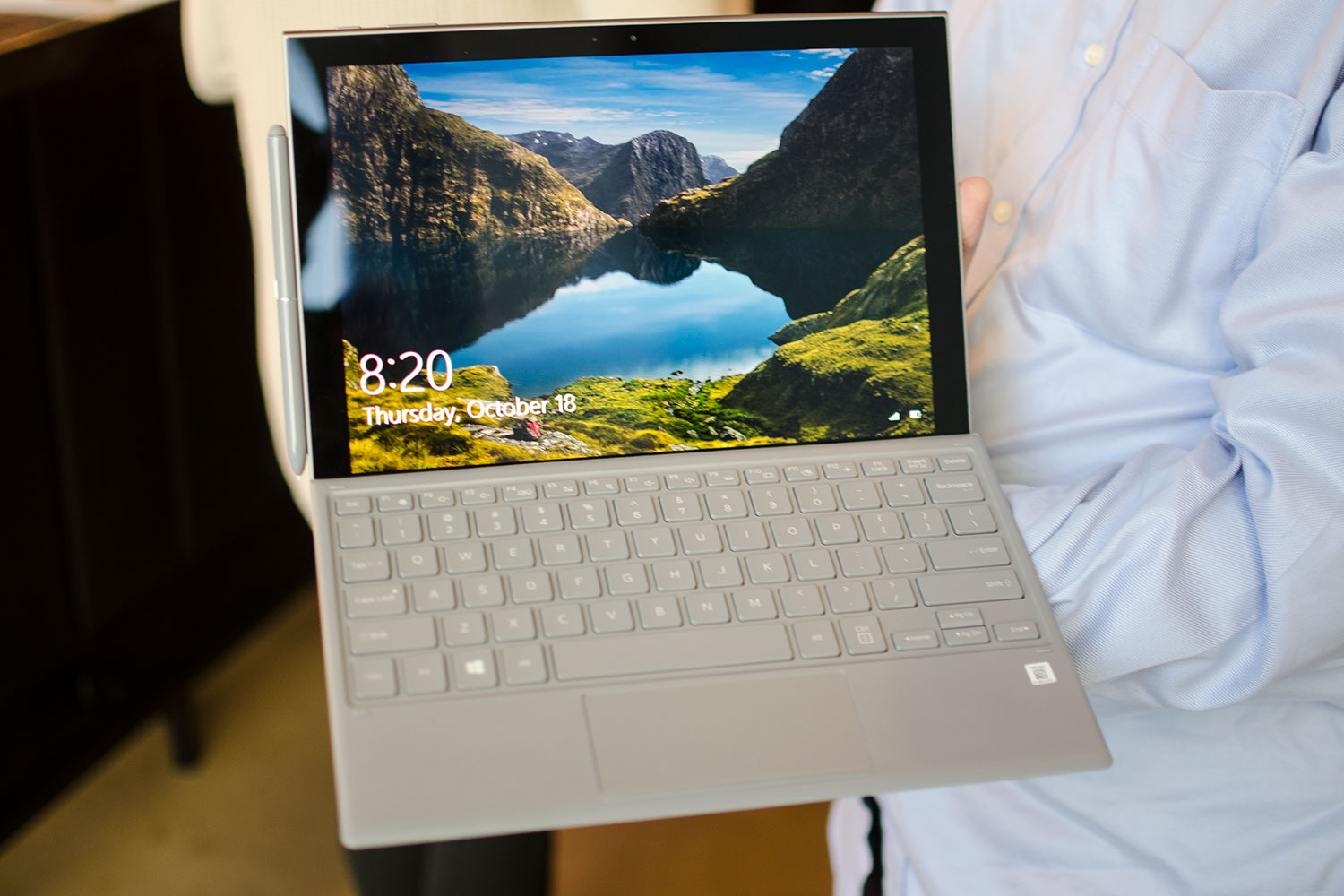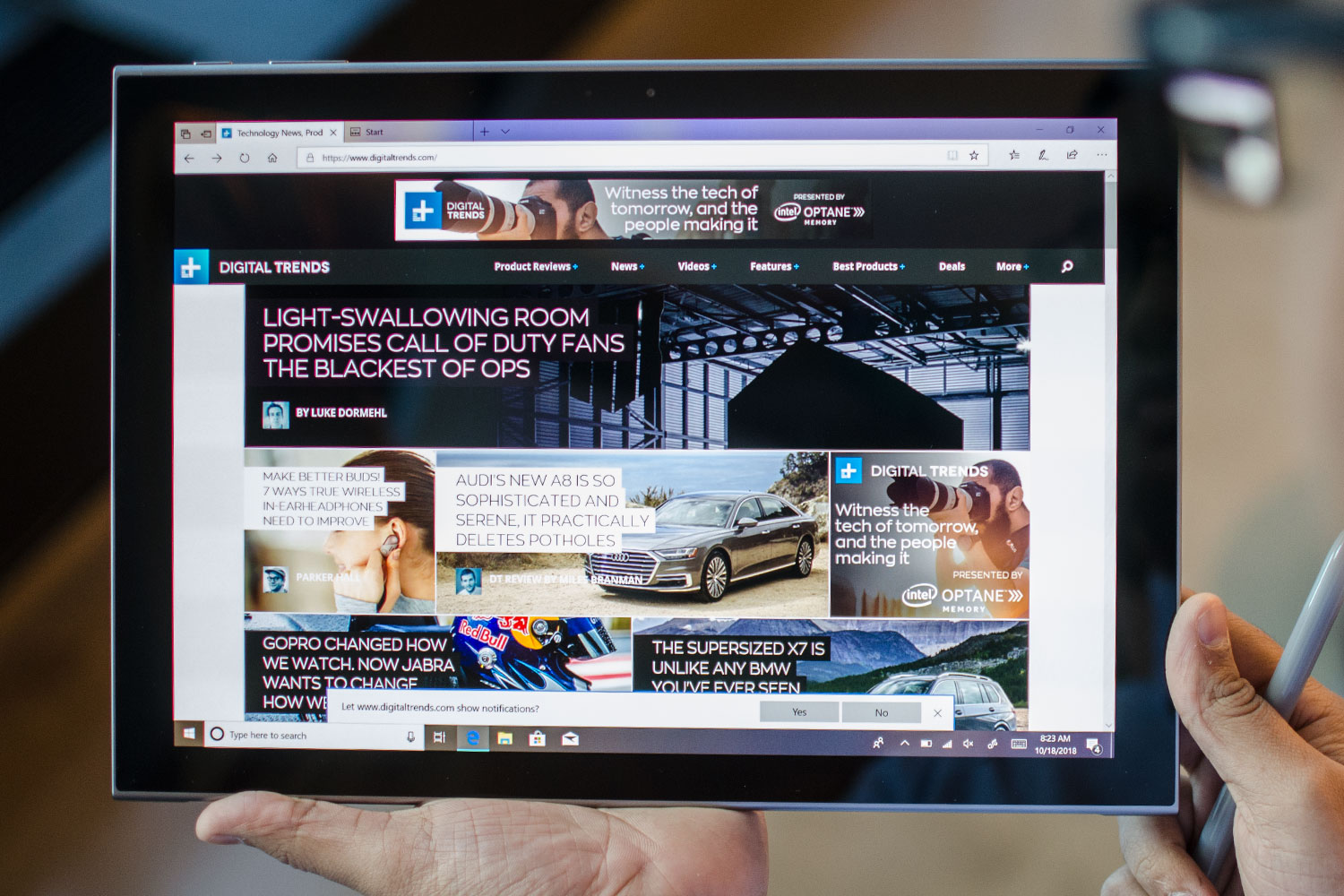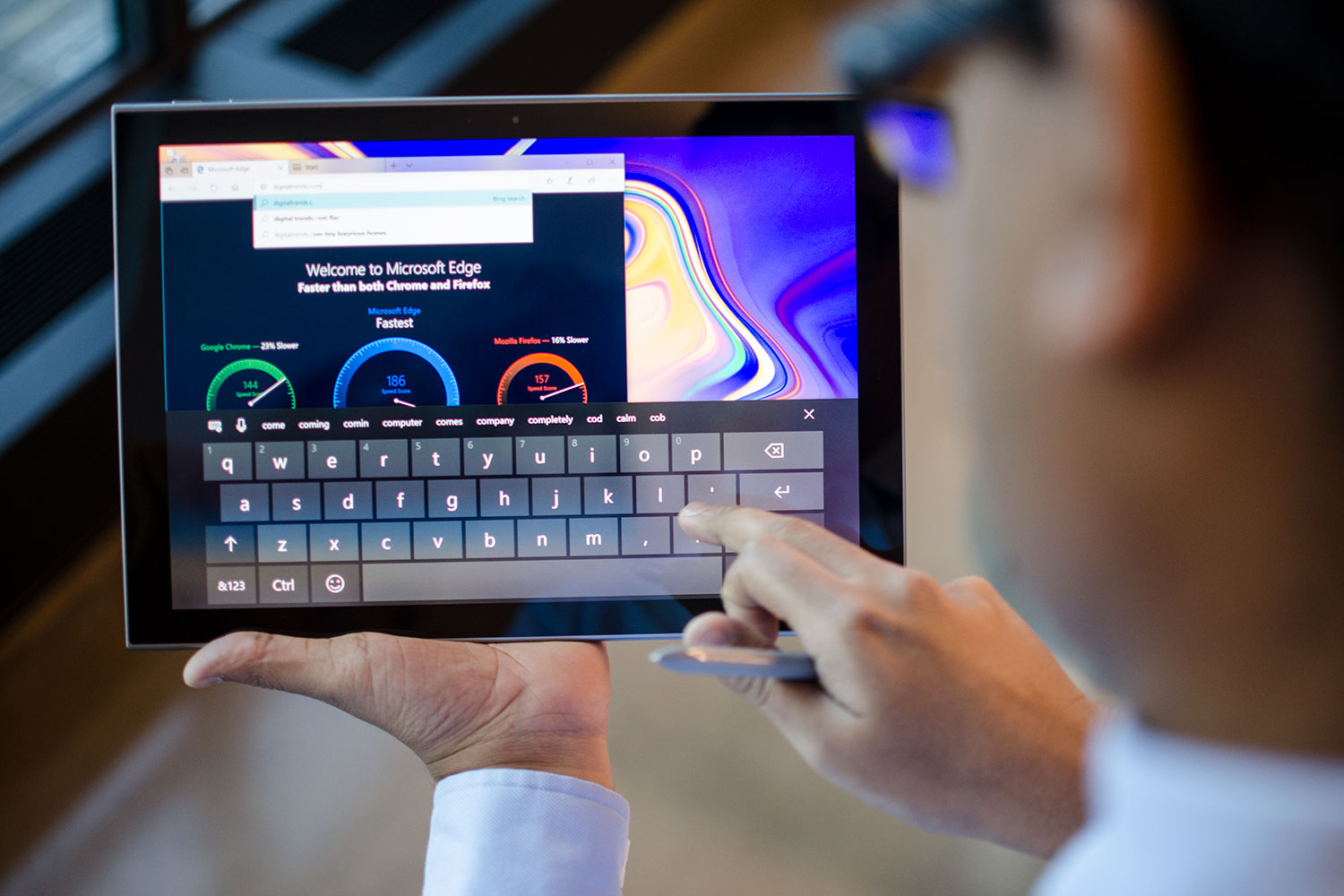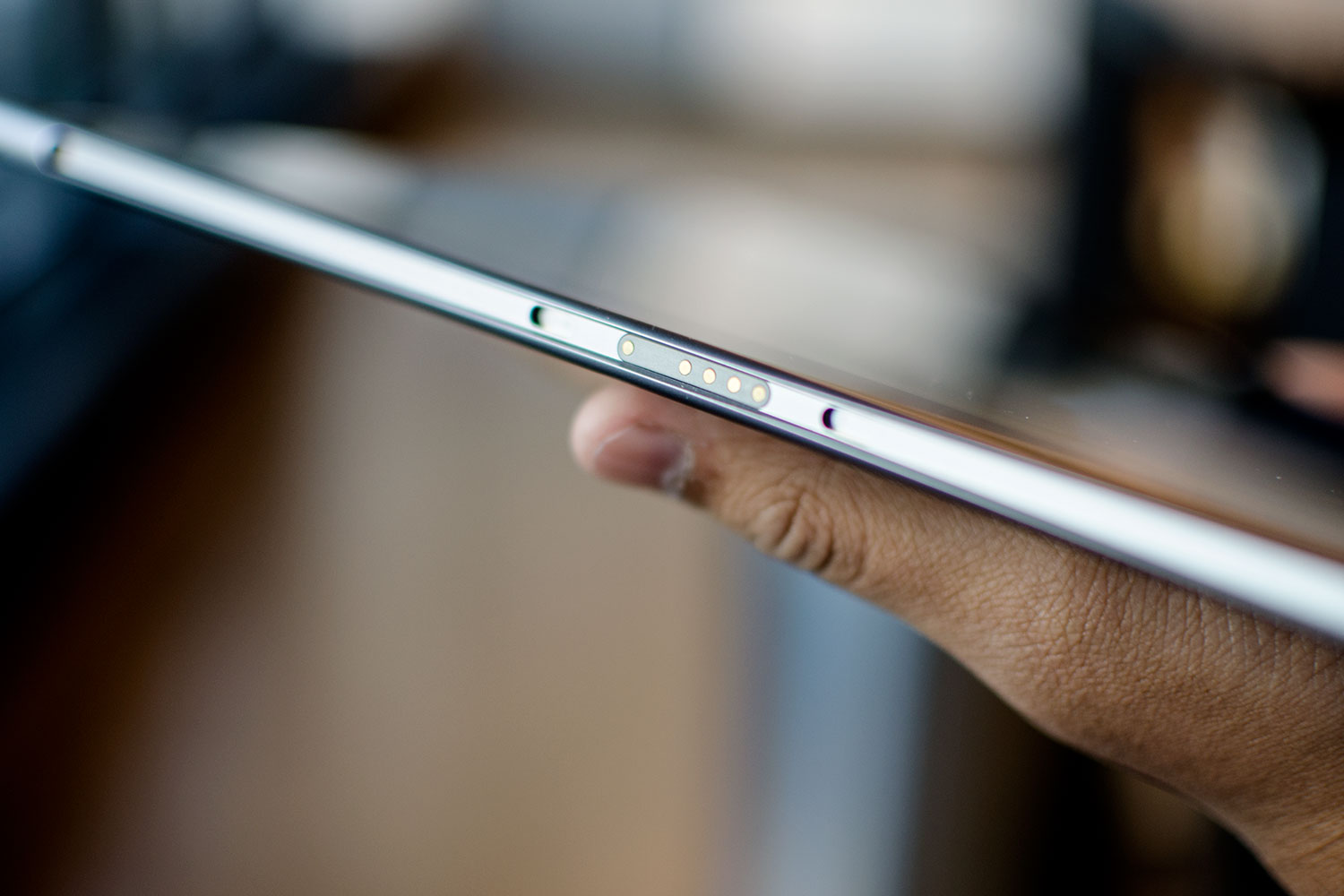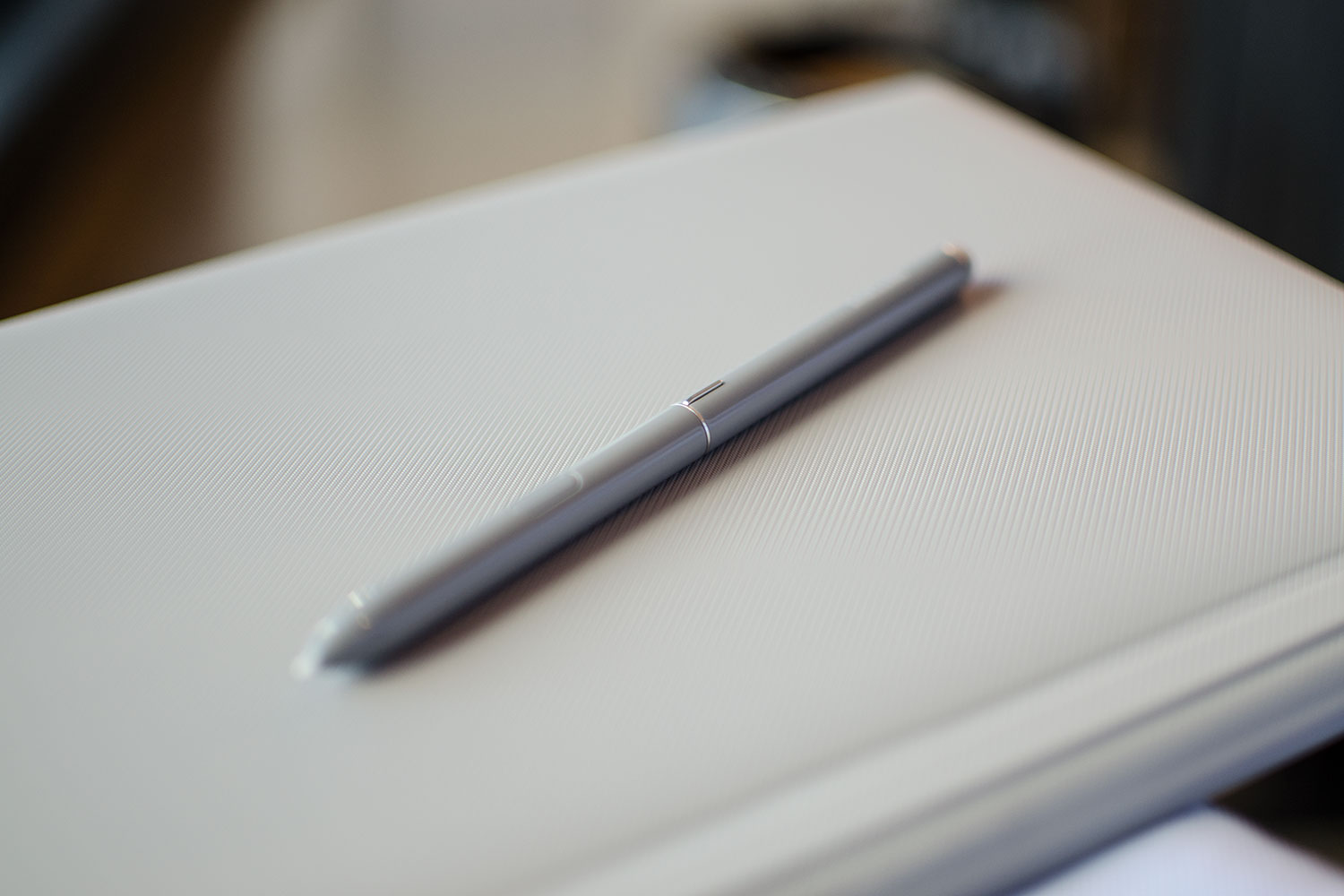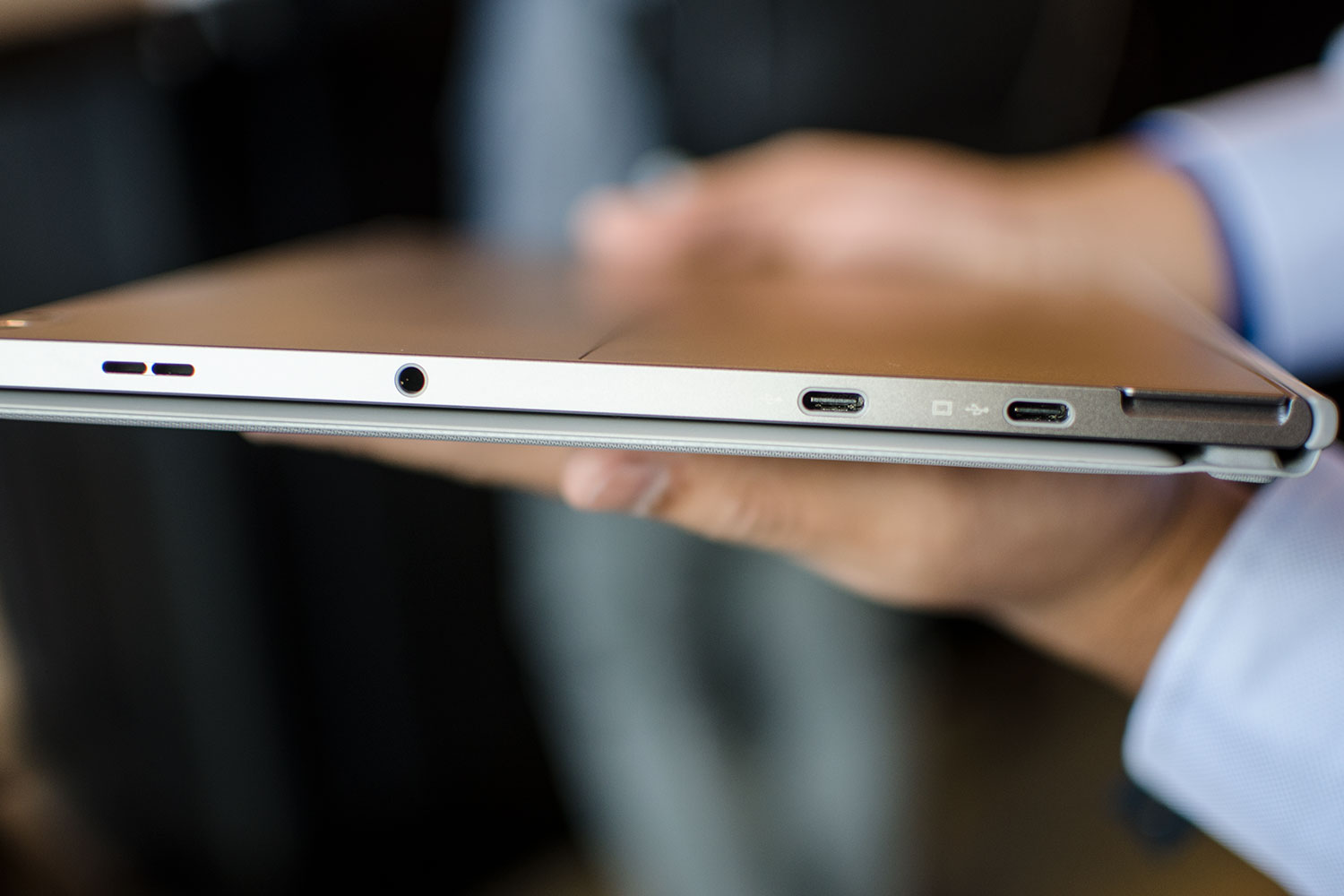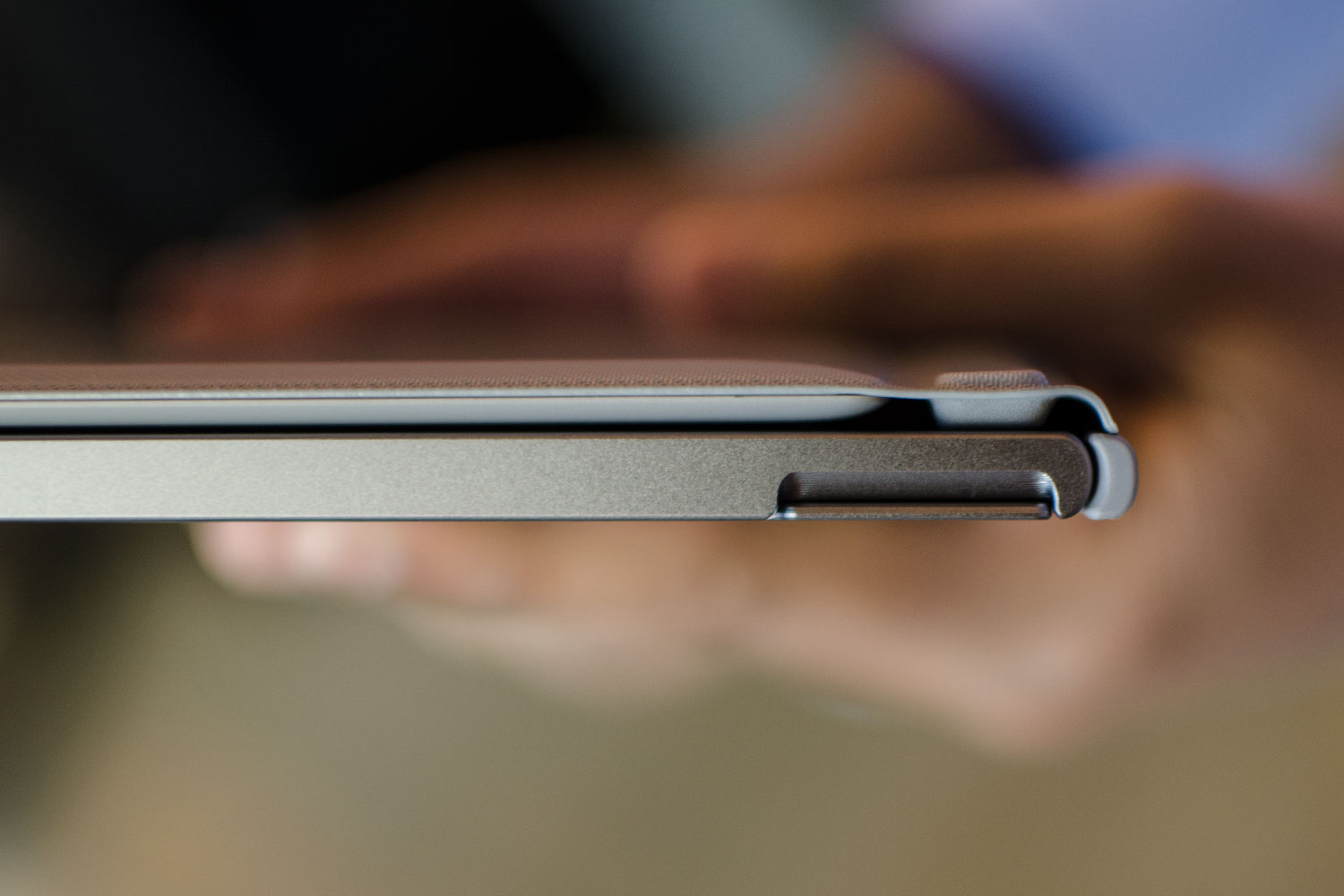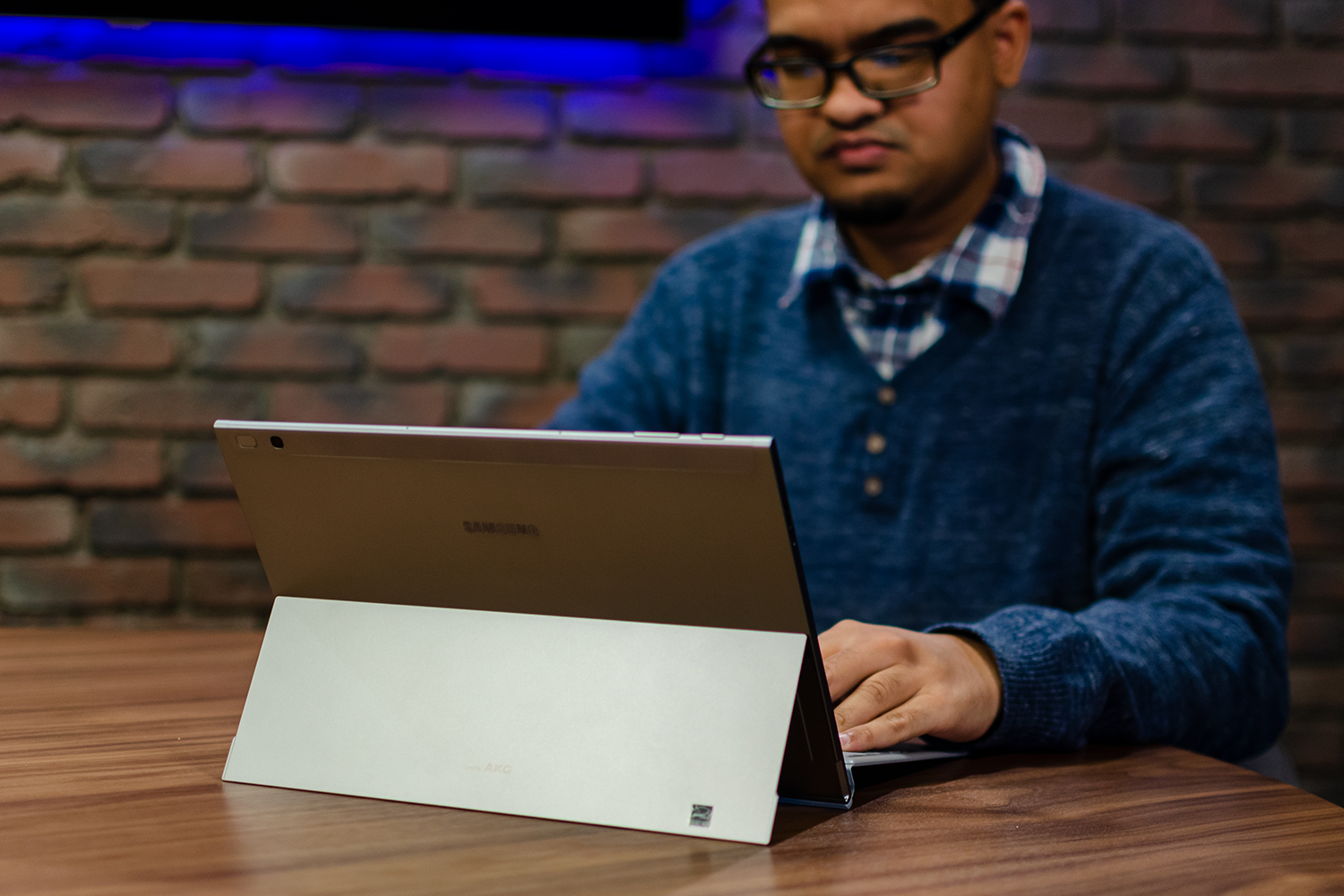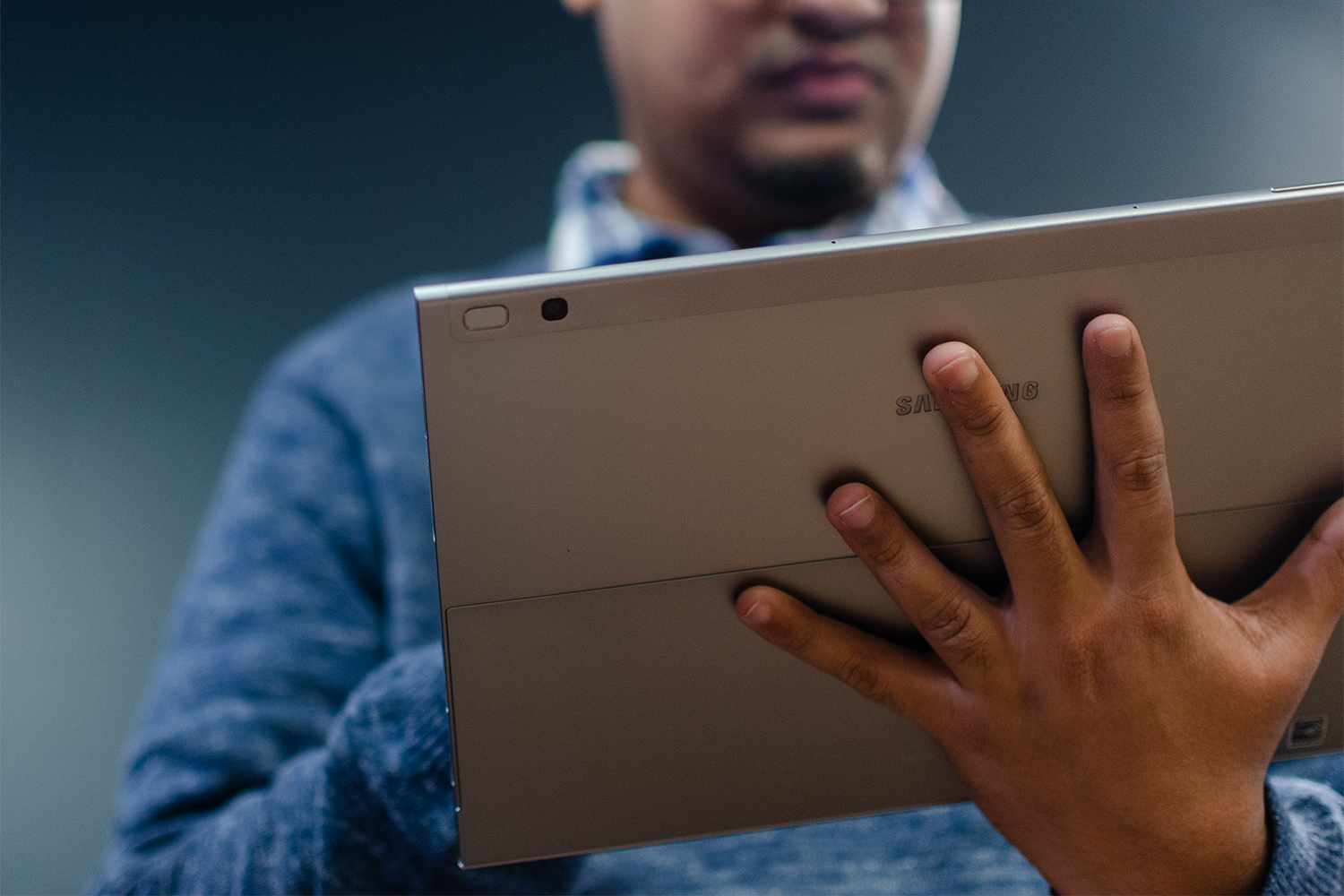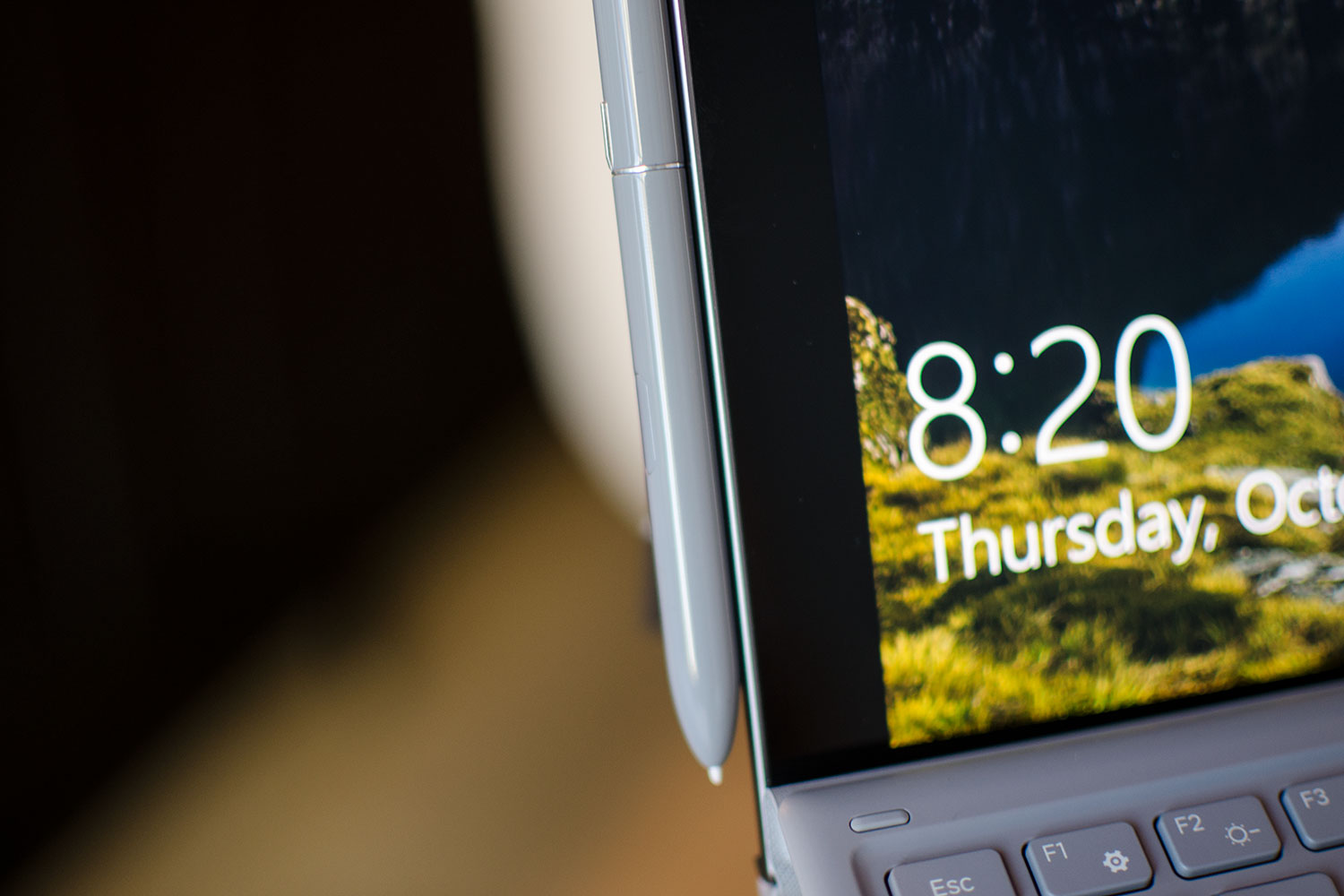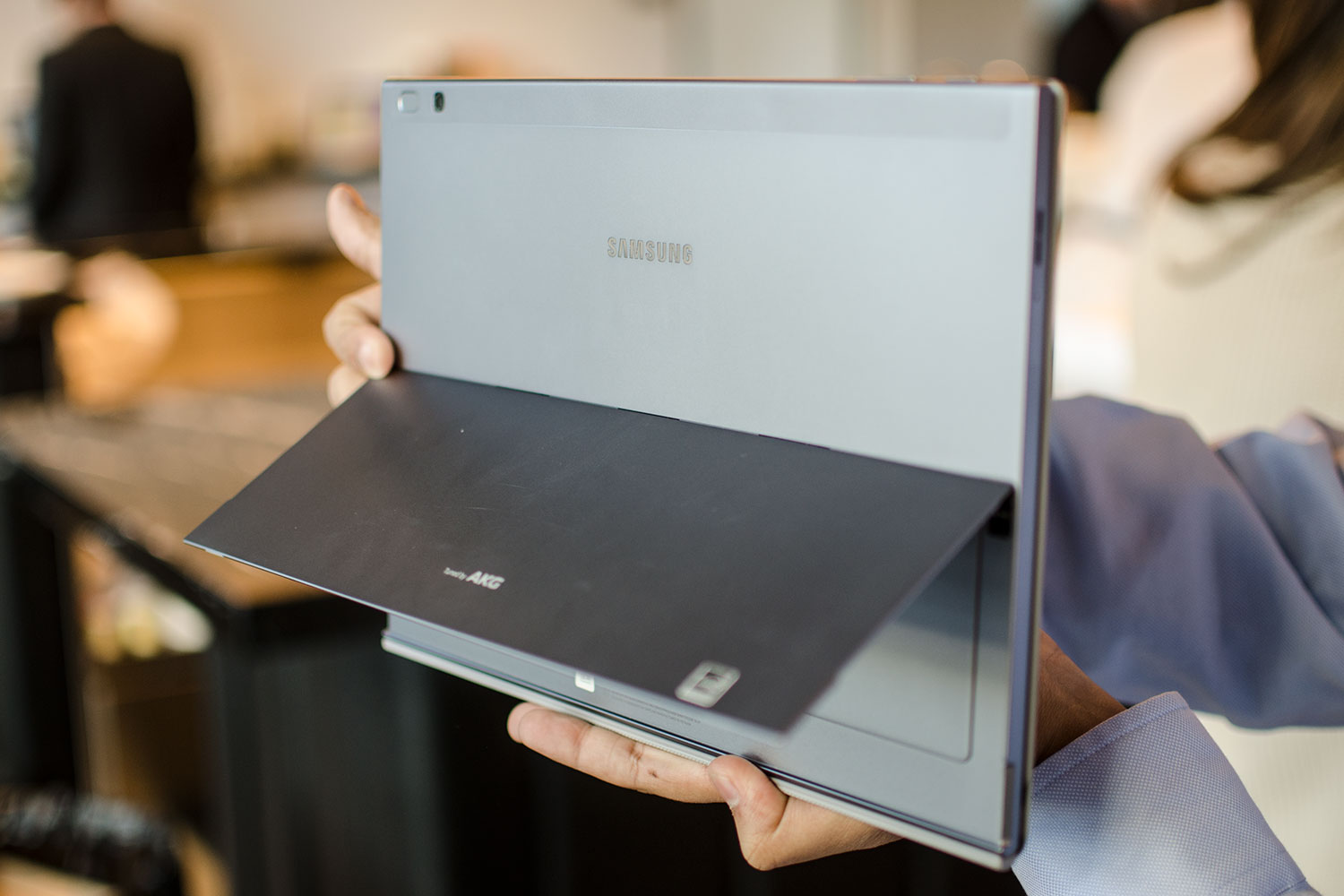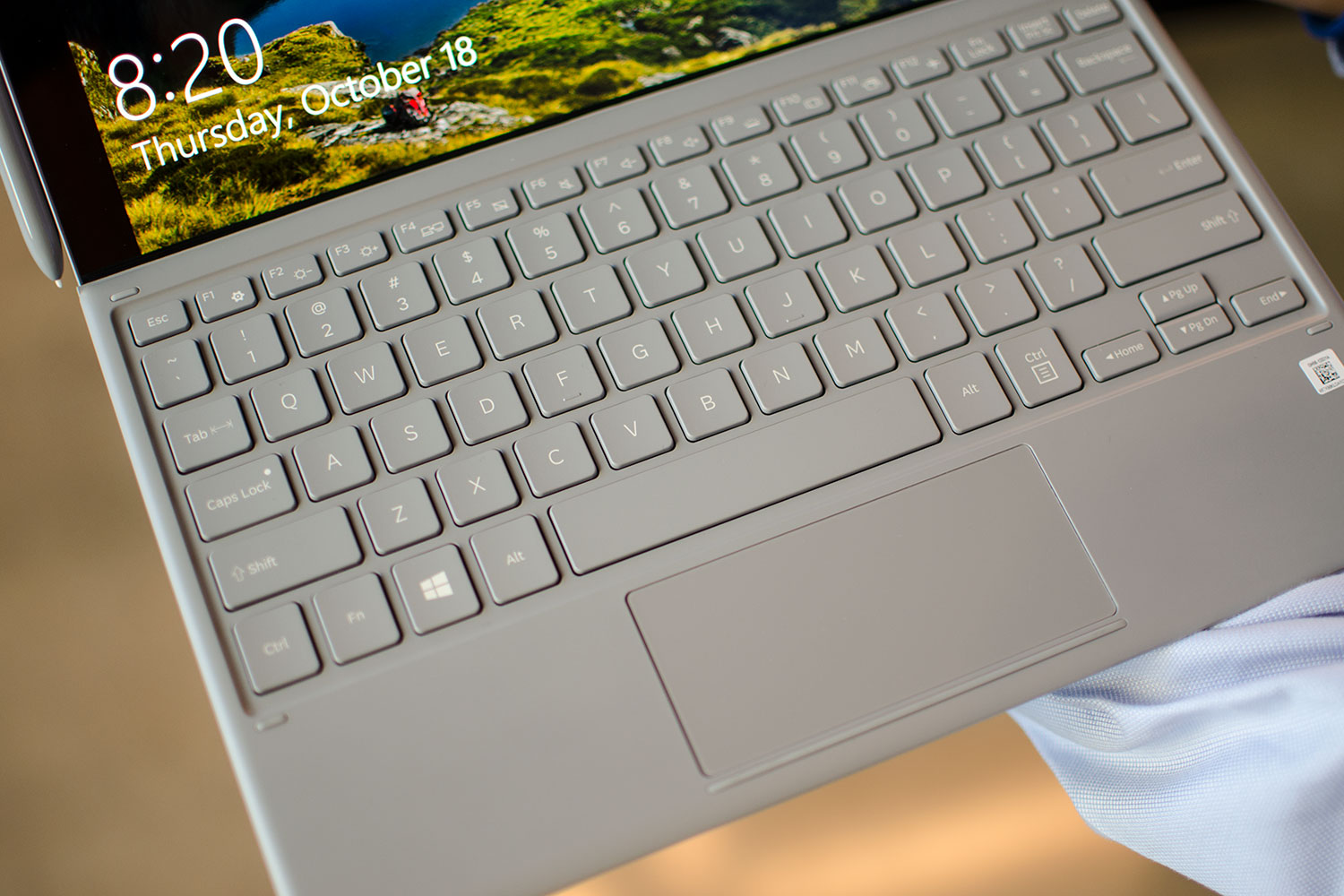Samsung’s new Galaxy Book 2 is moving away from Intel hardware, as the second-generation device ditches the Core M3 and Core i5 configuration options for a Qualcomm Snapdragon 850. The high-end system on a chip (SoC) combines a powerful octa-core processor with an onboard graphics processor for solid all-round performance and efficiency. But that’s not all the new Samsung 2-in-1 has to offer.
The original Galaxy Book was a valiant effort to create a versatile modern 2-in-1, and we found it to be light and powerful, and noted that it came with a beautiful display. But a lackluster battery life and terrible keyboard meant that it didn’t hold a candle to some of our favorite 2-in-1s like Microsoft’s Surface Pro. The Galaxy Book 2, however, appears to have taken great strides to fix its predecessor’s most glaring problems.
For starters, its battery life is supposedly far more impressive. While we don’t have raw watt-hour numbers for it, Samsung claims that when it’s running the Windows 10 S operating system it ships with, it can achieve as much as 20 hours. While we’d expect that to be in ideal scenarios, the company only claimed a life of 11 hours with the original Galaxy Book, so that gives us hope for great improvement to its life between charges. Fast charging, too, means that downtime with this device should be minimal, even for heavy users.
Alongside the new Qualcomm SoC Samsung has maintained the same 4GB of memory, though it has upped the default storage from 64GB with the last generation to a respectable 128GB as the default this time around. The display has received a bump in resolution, too, offering 216 pixels per inch with its 2,160 x 1,440 panel.
The physicality of the device hasn’t changed much. The curved corners of the Galaxy Book have been made more square on the Galaxy Book 2, and the bezels have been slimmed down slightly — but not enough to significantly hinder your grip while it’s being used as a tablet. Most interestingly, the Galaxy Book 2 now contains an integrated stand, similar to the stand on other 2-in-1 devices, like the Surface Pro 6.
The new-generation 2-in-1 is a little larger and heavier as well, though not so much that we’re concerned about portability.
Other new features include built-in Gigabit LTE connectivity. This was optional with the original Galaxy Book, but Samsung claims that implementing it for everyone will allow every user to remain connected at high speed at all times. Its ports include a pair of USB-C, a MicroSD card reader, and a 3.5mm headphone jack.
The Samsung Galaxy Book 2 is set to go on sale at an entry-level price point of $1,000 and will be available in AT&T, Microsoft, and Samsung’s stores on November 2. Those wishing to try before they buy will be able to test it out in AT&T, Sprint, and Verizon stores later in the month.
